The Transportation Safety Board of Canada (TSB) has released a series of photographs showing substantial damage to an Air Canada Airbus A320 involved in an accident at Halifax Stanfield International airport early on 29 March.
The agency calls the event a “runway excursion” in an initial statement, and an early Air Canada statement describes it as an “incident upon landing”.
Photographs of the aircraft, however, as well as statements from passengers and airport personnel, suggest the accident may have been more serious than a hard landing.
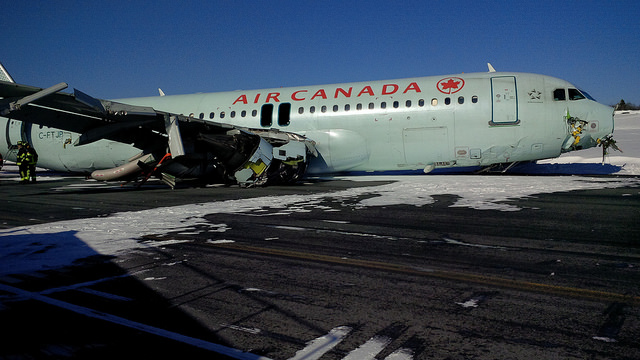
TSB
“It came down pretty hard and did a fair bit of damage to the aircraft,” Peter Spurway, the airport’s vice-president of corporate communications tells Flightglobal.
“A rose by any other name…”, he adds, referencing a line from William Shakespeare ’s Romeo and Juliet, when asked if the accident was a hard landing or crash. “At the end of the day, it depends on one’s definition.”
“All the landing gear is off of it. The engines are off of it. This wasn't a hard landing.. the plane is in pieces,” one passenger tells CNN.
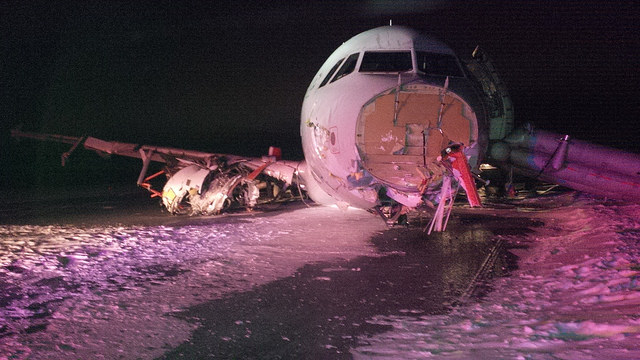
TSB
The accident happened as the aircraft, registration C-FTJP, approached Halifax’s runway 05 at about 00:43 local time. The aircraft, carrying 133 passengers and five crew, was operating flight 624 from Toronto and had circled prior to attempting to land.
The 10,500ft (3,200m) runway 05 does not have an instrument landing system (ILS), though the opposing runway 23 does have a category II ILS.
The aircraft touched down more than 1,100ft ahead of the runway, with its main landing gear shearing off the aircraft after the gear struck an ILS antenna, investigators say.
They add that the aircraft may have severed a power line.
The end of the runway sits on a grassy berm above a road, and more than one dozen antennas lined the end of the runway, a photograph taken from the road shows.
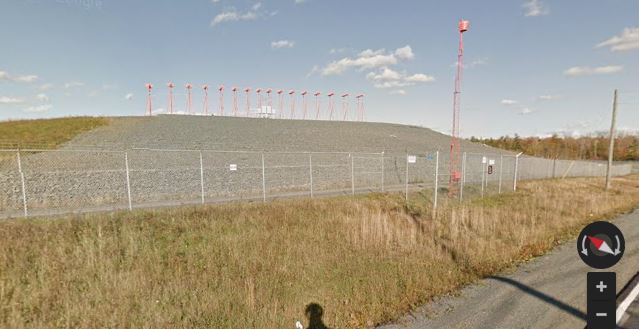
Google Maps
After touching down, the A320 skidded on its belly for another 1,100ft before stopping, investigators say.
Spurway says the aircraft came to a rest on the north side of the runway, which remains closed to traffic. The 138 passengers and crew then evacuated.
Runway 23’s ILS is out of service, according to a notice to airmen.
Air Canada says 23 passengers and crew were transported to the hospital but adds that none were “critically injured”.
Spurway, however, says two passengers needed “urgent care”.
The airline could not be immediately reached to provide an update, but said on 29 March that all but one of the injured people had been released from the hospital.
Photographs show the aircraft resting on its belly on the airport tarmac, it’s nose cone missing.
The right wing appears mangled and both engines appear to have detached from the wings.
The right engine, a crumpled mess, appears to be wedged beneath the right wing and the tarmac, and the left engine appears to have cleanly separated and is seen resting by itself well behind the aircraft. The horizontal stabilisers also largely broke free from the aircraft.
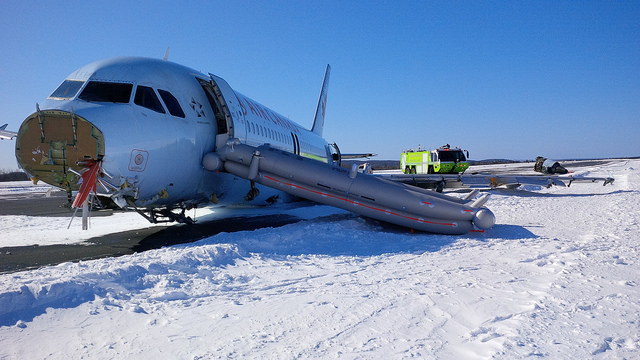
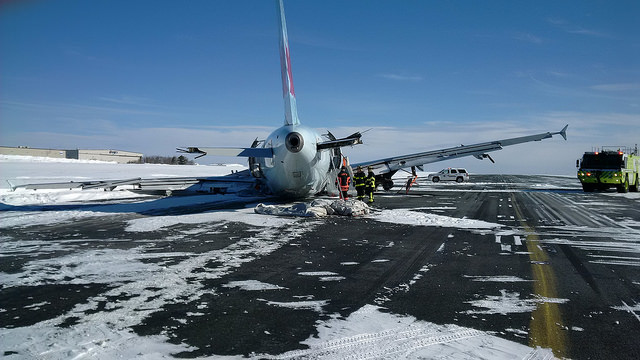
TSB
At the time of the accident, heavy snow was falling at the Halifax airport, visibility was reduced and the wind was blowing up to 30kt from the northwest, according to reports.
“There was a lot of snow,” Spurway says. “It was very snowy and very windy.”
But Air Canada’s chief operating officer Klaus Goersch says, “When approach was initiated, the weather was at the approach minimums”.
The aircraft, manufactured in 1991, had CFM56 engines and had accumulated 74,137h and 30,237 cycles as of November 2014, according to the Ascend Fleets database.
The TSB has deployed a team to investigate the accident, the agency says.
Source: Cirium Dashboard



















